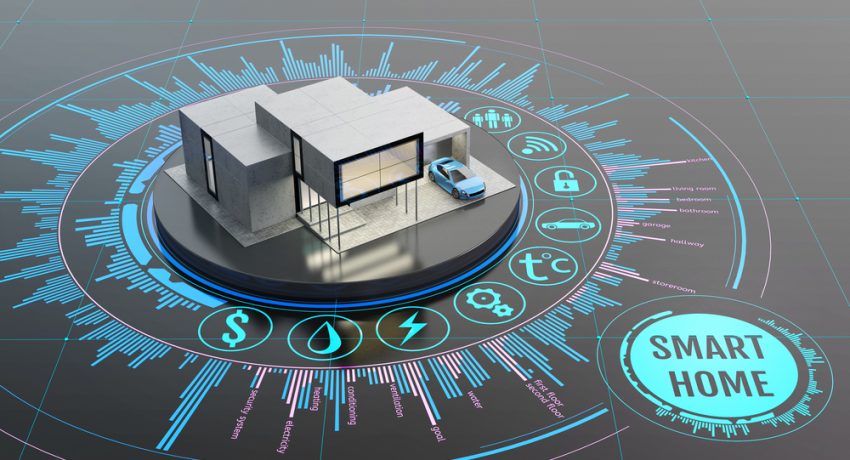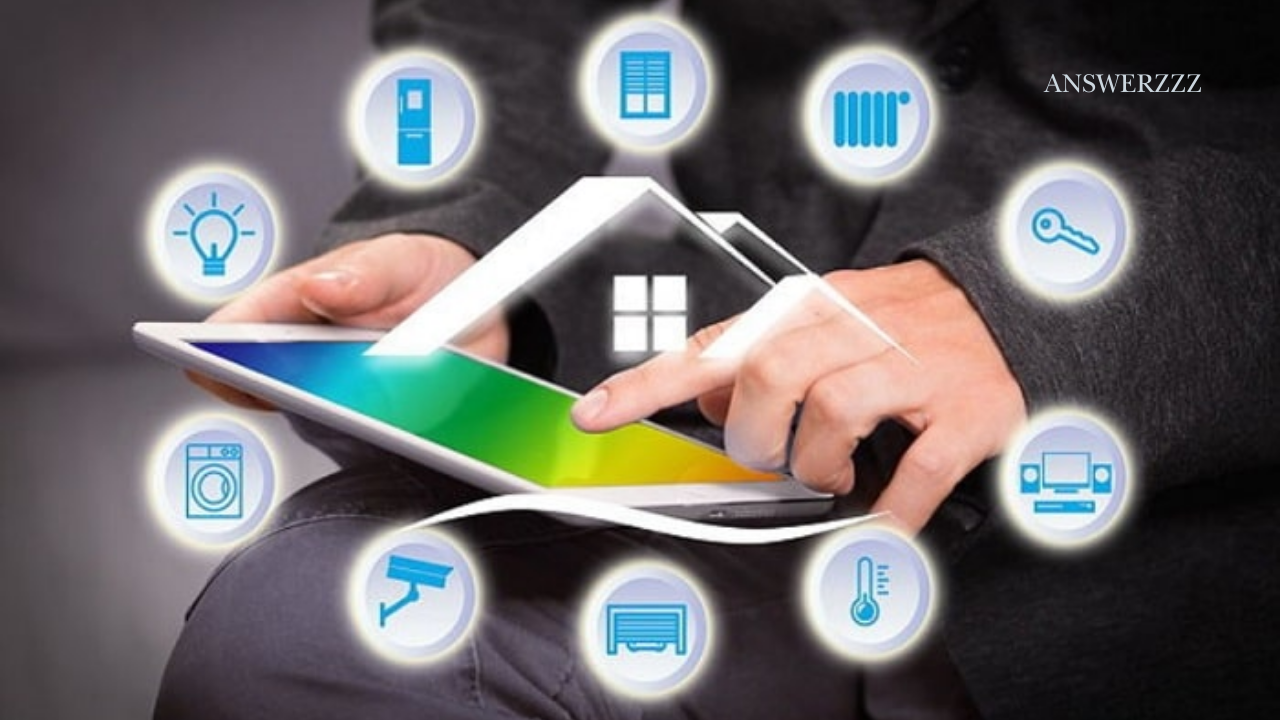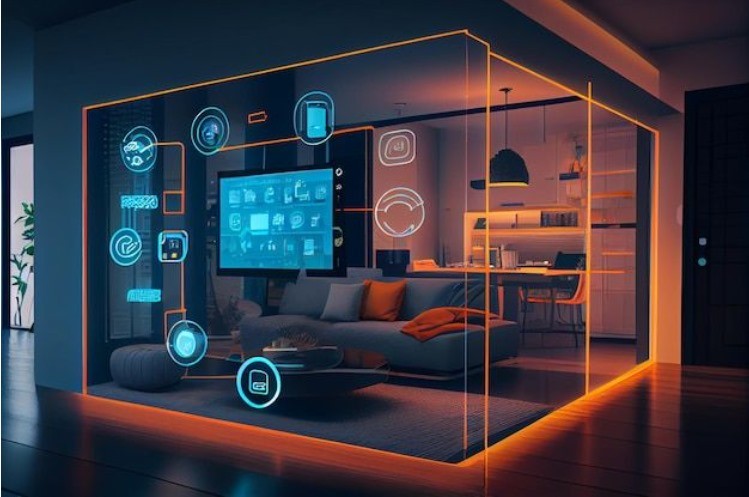The future is now, and 2025 promises to be a groundbreaking year for smart home technology. With rapid advancements in artificial intelligence (AI), the Internet of Things (IoT), and energy-efficient solutions, homeowners have more options than ever to make their living spaces efficient, secure, and comfortable. Whether you’re a tech enthusiast or a novice looking to upgrade your home, these smart home tips for 2025 will help you create a high-tech, streamlined living experience.
1. Invest in a Centralized Smart Hub

A centralized smart hub serves as the brain of your smart home, connecting all your devices and allowing you to control them from a single interface. In 2025, advanced hubs like Google Nest Hub Max, Amazon Echo Show 15, and Apple HomePod are integrated with cutting-edge AI features, making them smarter and more responsive than ever before.
Tips for Choosing the Right Smart Hub
- Compatibility: Ensure your hub is compatible with the devices you plan to use (e.g., smart lights, locks, cameras).
- User Interface: Look for a hub with an intuitive interface that allows easy control via voice commands, a mobile app, or a touch screen.
- Security Features: Opt for hubs with robust security measures, such as encrypted data transmission and multi-factor authentication.
A centralized hub not only simplifies management but also enhances the efficiency of your home by coordinating the devices to work together seamlessly.
2. Upgrade to Smart Appliances for Efficiency
In 2025, smart appliances are designed to save time, reduce energy consumption, and add convenience to your daily routine. From smart refrigerators that monitor your groceries to smart ovens that cook meals based on your preferences, these appliances are game-changers.
Key Smart Appliances to Consider
- Smart Refrigerator: Features like inventory tracking, recipe suggestions, and remote temperature control make kitchen management easier.
- Smart Oven: Pre-programmed recipes and remote operation allow you to start cooking from anywhere using your smartphone.
- Smart Washer and Dryer: These appliances can detect the fabric type and adjust washing and drying cycles for optimal results while saving energy.
Pro Tip:
Check for appliances that have energy-saving modes and are certified by ENERGY STAR. These features not only reduce your carbon footprint but also save on utility bills.
3. Enhance Home Security with AI-Powered Solutions
Smart home security is evolving rapidly, with AI-powered cameras, video doorbells, and smart locks providing enhanced protection. The latest systems are equipped with facial recognition, motion detection, and real-time alerts, making it easier to monitor your home remotely.
Security Enhancements for 2025
- AI-Powered Cameras: These cameras can differentiate between familiar faces and strangers, reducing false alarms and providing better security insights.
- Smart Locks: Control access to your home via your smartphone, and grant temporary access codes to guests or service providers.
- Video Doorbells: Get instant alerts and live video feeds when someone approaches your door, even when you’re not home.
Pro Tip:
Choose security devices that offer end-to-end encryption to protect your data from potential cyber threats.
4. Optimize Energy Usage with Smart Lighting Systems
Lighting plays a crucial role in creating the perfect ambience while also affecting your energy bills. In 2025, smart lighting systems offer features like voice control, motion sensors, and colour adjustments, making it easier to set the mood while saving energy.
Smart Lighting Tips
- Motion-Activated Lights: Install motion sensors in hallways, bathrooms, and outdoor areas to turn lights on only when needed.
- Smart Bulbs: Opt for energy-efficient LED smart bulbs that can be controlled via an app, set on schedules, or integrated with voice assistants.
- Adaptive Lighting: Use systems like Philips Hue or LIFX that adjust the colour and intensity of the light based on the time of day.
Pro Tip:
Incorporate natural lighting solutions like automated blinds that adjust based on sunlight to enhance energy efficiency.
5. Automate Climate Control with Smart Thermostats
Heating and cooling are among the biggest energy expenses for most households. A smart thermostat learns your preferences and adjusts the temperature automatically, helping you maintain comfort while reducing energy costs.
Home Organization Tips for 2025: Declutter and Simplify Your Space
Top Features of Smart Thermostats in 2025
- Learning Capabilities: The latest models use AI to learn your schedule and temperature preferences, automatically optimizing settings.
- Remote Access: Control your home’s climate from anywhere using a mobile app.
- Integration with Smart Sensors: Pair your thermostat with smart sensors in different rooms for precise temperature control.
Pro Tip:
Look for thermostats that provide energy usage reports, helping you identify patterns and make adjustments to save money.
6. Create a Seamless Entertainment Experience
A smart entertainment system can transform your living room into a home theatre. In 2025, devices like 4K smart TVs, AI-enhanced speakers, and virtual reality headsets offer immersive experiences, taking entertainment to the next level.
Must-Have Entertainment Upgrades
- Smart TV: Choose a 4K or 8K TV with integrated streaming services and voice control for a seamless experience.
- Smart Sound System: Opt for a soundbar or smart speakers that offer spatial audio and can be controlled via voice or app.
- VR and AR Integration: Incorporate VR headsets for interactive gaming and augmented reality experiences in your entertainment setup.
Pro Tip:
Ensure all your devices support Wi-Fi 6 or the upcoming Wi-Fi 7 standard for faster, more reliable connectivity.
7. Adopt Voice and Gesture Control for Hands-Free Living
Voice and gesture control are becoming standard features in smart homes, allowing for a hands-free experience. Devices like Amazon Alexa, Google Assistant, and Apple Siri have advanced significantly, offering more natural and intuitive control options.
Tips for Optimizing Voice Control
- Custom Commands: Create custom voice commands for complex tasks, like “Goodnight” to turn off lights, lock doors, and adjust the thermostat.
- Multi-Device Integration: Ensure your voice assistant is connected to all compatible devices for unified control.
- Privacy Settings: Regularly review your privacy settings and manage voice recordings to enhance security.
Pro Tip:
Explore gesture control devices like the Google Nest Hub Max, which can detect hand gestures for tasks like pausing music or dismissing timers.
8. Utilize Smart Sensors for Home Automation
![]()
Smart sensors are the backbone of many automated systems, providing data that helps your home respond intelligently to changes in the environment. These sensors can detect temperature, humidity, motion, and even air quality.
Recommended Smart Sensors for 2025
- Motion Sensors: Automate lights, security systems, and other devices based on detected movement.
- Temperature and Humidity Sensors: Maintain optimal comfort and energy efficiency by adjusting the thermostat automatically.
- Air Quality Sensors: Monitor the air quality in your home and activate air purifiers or ventilation systems when needed.
Pro Tip:
Place sensors strategically in areas with high foot traffic or significant temperature variations for maximum effectiveness.
9. Incorporate Sustainable Tech for a Greener Home
Sustainability is a major focus for smart home technology in 2025. By incorporating eco-friendly devices and practices, you can reduce your environmental impact while also saving money.
Eco-Friendly Tips for a Sustainable Smart Home
- Solar-Powered Smart Devices: Consider investing in solar-powered security cameras, lights, and chargers.
- Smart Water Management: Use devices that monitor water usage and detect leaks to conserve water and prevent damage.
- Energy Monitoring Systems: Install a smart energy monitor to track your home’s electricity usage in real-time and identify areas for improvement.
Effective Communication Tips for the Modern Workplace in 2025
Pro Tip:
Opt for devices that are made from recycled materials and have energy-saving certifications.
10. Future-Proof Your Home with Smart Connectivity
The key to building a smart home that lasts is future-proofing your technology choices. With advancements in 5G and Wi-Fi 7, connectivity will play a crucial role in ensuring your devices remain efficient and up-to-date.
Tips for Future-Proofing Your Smart Home
- Invest in High-Speed Internet: A strong Wi-Fi connection is essential for the seamless operation of your smart devices.
- Choose Upgradeable Devices: Opt for devices that can receive firmware updates, keeping them functional as technology evolves.
- Plan for Expandability: Ensure your smart hub can support a wide range of devices, including those that may not yet exist.
Pro Tip:
Regularly update your devices’ firmware to benefit from the latest features and security enhancements.

Building a smart home in 2025 is all about creating an efficient, high-tech living space that caters to your needs while staying ahead of the curve. By following these tips, you can enjoy a home that’s not only comfortable and secure but also energy-efficient and ready for the future. Embrace the possibilities of smart technology and transform your home into a modern marvel!




